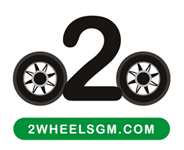URBAN RIDING
Riding on two wheels is a great way of getting about and escaping public transport and traffic delays, but with this freedom comes a need to be extra vigilant and aware of the potential risks.
The majority of journeys will be fine - as long as you ride with a heightened awareness of what's happening on the road around you.
Sometimes we hear about the collision data which shows that riders are at greater risk of being involved in a collision and being injured. We shouldn’t ever forget or ignore this - instead we should use this information to inform the way in which we ride, the speeds we choose and the road position we adopt.
Here are a couple of useful tips:
It is important to read the road: if traffic is heavy, drivers are more likely to make sudden movements from lane to lane or perform a 'u-turn'. Be aware of this when traffic levels are heavier than normal.
Ride where you can be seen and you can see: many roadside properties have off road parking, and many roads have vehicles parked along them. These conditions can cause a real blind spot for both drivers and riders - put yourself in a position where you have the best opportunity to see reversing cars, and where they have the best chance to see you!
Time of day
Data shows that riders are at greatest risk of being involved in a collision at around 8.00am, as the morning rush hour reaches its peak. A second spike occurs later in the afternoon, as journeys home from school merge with those made by commuters leaving off at the end of the working day.
If you ride to work, it's vital you keep your wits about you at all times.
Weather
Rain, ice and snow test a rider's skills to the maximum, and in these conditions you should lower your speed, use clear and early signalling and be extra vigilant at all times. Keeping a safe distance from other roads users is also critical.
When the weather is poor, it is important to ensure you have reflectors and wear hi vis gear to make it easier for drivers to see you.
Filtering
While 'filtering' is legal (where motorbikes overtake queuing traffic) it is fraught with potential dangers. So much so that police officers on the Bikesafe course deliver a structured 20-minute lecture focusing on this practice.
It is important to remember that filtering is an overtaking movement, albeit at a slow speed. Therefore, as with all overtaking, it needs to be approached with considerable care. Never filter where the space between traffic lanes is restricted, and never do it at speed: a good rule of thumb is to go no more than 5-10mph faster than the cars stuck in the traffic queue - so if they are not moving, you know how fast you should be going!
Watch carefully for cars switching lanes: drivers in congestion often drive impatiently and cross to another lane if they think it is moving quicker - but they’ll rarely check for bikes while they are doing it.
Watch out for heads, too: drivers will often thrust themselves out of the window to get a better view of the scene ahead. Passing too close could lead to problems.
Finally, remember there are places where filtering is illegal: you cannot pass queuing traffic in a no overtaking zone (eg, solid white lines or after a no overtaking sign) or on the approach to a crossing, with zigzags.
